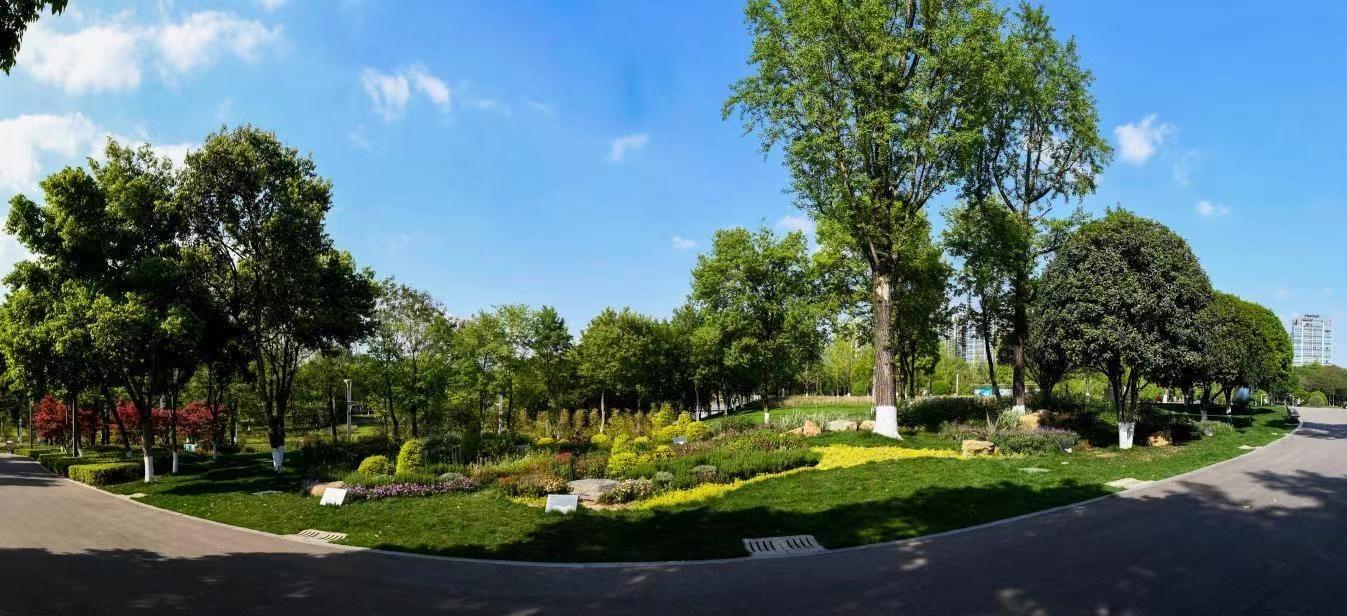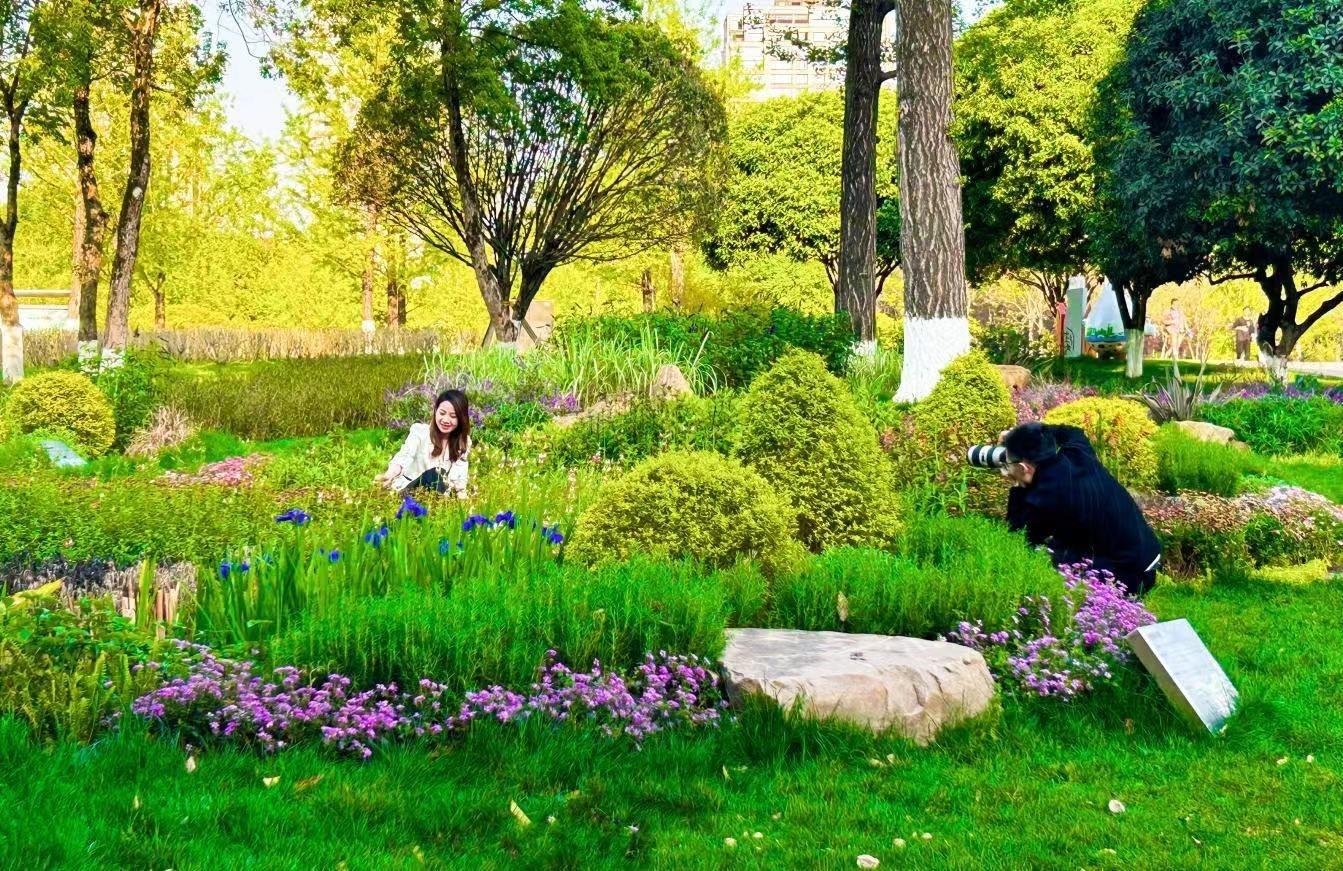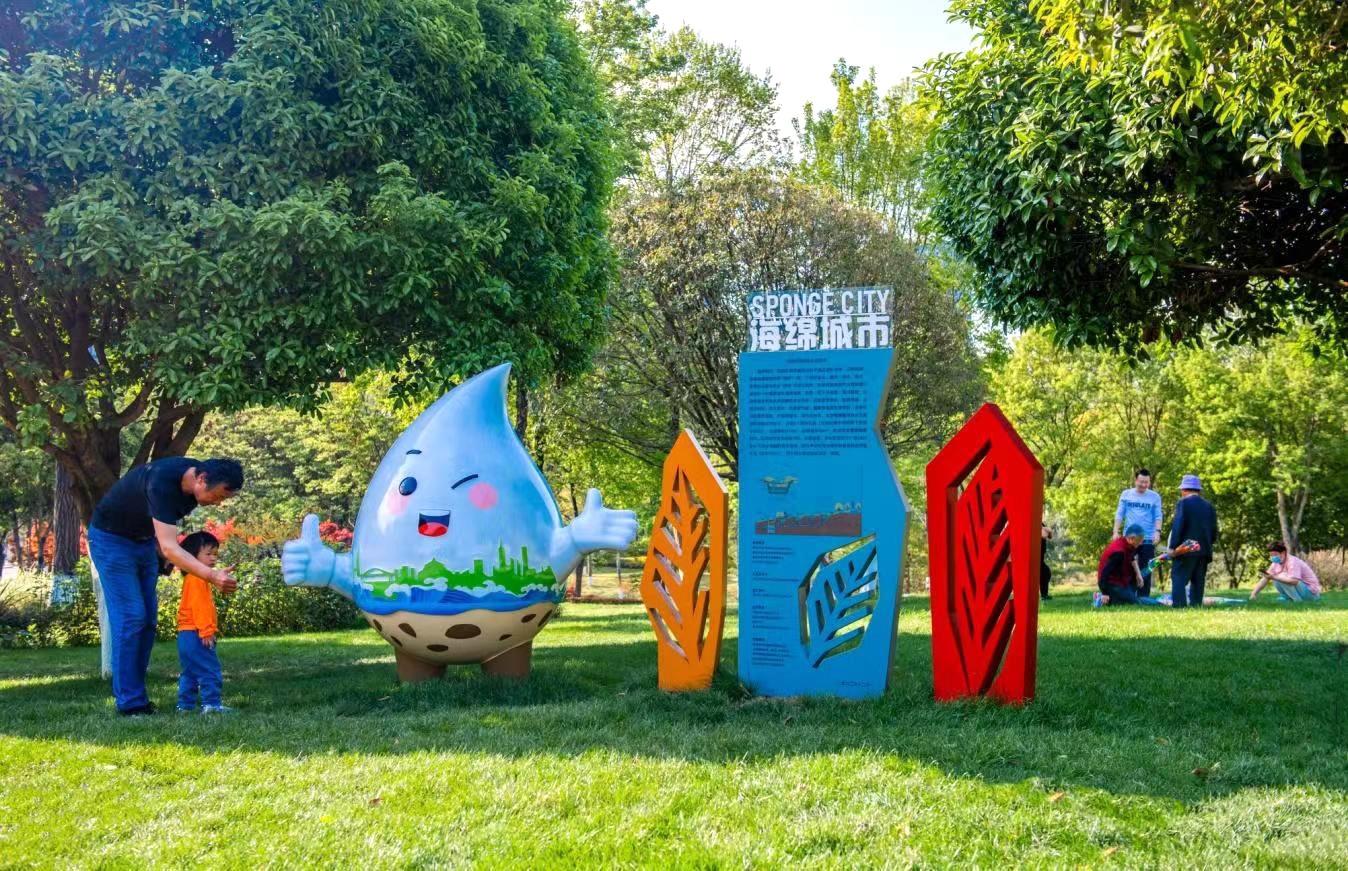Facing rising flood threat, municipality's proposals for storing rainwater runoff both environmental and practical
 Chongqing's first demonstration "sponge" garden is part of Chongqing Central Park. (PHOTO PROVIDED TO CHINA DAILY)
Chongqing's first demonstration "sponge" garden is part of Chongqing Central Park. (PHOTO PROVIDED TO CHINA DAILY)
Chongqing's first demonstration "sponge" garden was recently opened to the public in the city's Yubei district, marking an additional step toward its embrace of the "sponge city" concept.
The garden, which is part of Chongqing Central Park, covers an area of about 700 square meters and is equipped with sustainable water systems that can collect and purify rainwater runoff from approximately 2,000 square meters of impermeable ground in a nearby plaza, according to the Chongqing Municipal Department of Housing and Urban-Rural Development.
The garden also supports sustainability, and is planted with decorative, long-living plants. Water stored in the overflow ports from multiple gardens can be redirected to sustain the plants through a network of pipelines and sprinklers.
Flooding is one of the most serious water-related issues facing many Chinese cities, and is a consequence of rapid urbanization, changes to land use and the disappearance of natural wetlands. To cope, China turned to the concept of creating "sponge cities" on a mass scale seven years ago.
In October 2015, the State Council, China's Cabinet, launched the sponge city pilot project, in which 30 metropolises are taking part. The project's aim is to ensure that by 2030, around 80 percent of urban areas should be able to capture and reuse at least 70 percent of their rainwater.
 Chongqing residents enjoy themselves in the garden. (PHOTO PROVIDED TO CHINA DAILY)
Chongqing residents enjoy themselves in the garden. (PHOTO PROVIDED TO CHINA DAILY)
The southwestern metropolis of Chongqing has developed its sponge city capabilities particularly rapidly, and is looking for ways to solve the water problems afflicting urban areas of West China.
Situated in the Chongqing Liangjiang New Area, Yuelai New City, which covers 18.67 sq km, was one of 16 sponge cities on a national pilot list of climate-resilient urban designs released in 2016. More sponge city projects are also underway.
In December 2020, research conducted by the local housing and urban-rural development department in partnership with CMCU Engineering Co, a state-owned sci-tech engineering company based in Chongqing, discovered that the soil in Chongqing has insufficient storage capacity for rainwater.
"This means we have to use larger diameter storm sewers, which are more expensive, and we face a greater risk of urban floods," said Mo Tianzhu, an employee of the Chongqing Comprehensive Management Center of Urban Pipeline, which is affiliated with the Chongqing Municipal Department of Housing and Urban-Rural Development.
"The garden acts like a sponge as a result of its various underlayers of different permeability that control leakage, slowing down rainwater runoff and mitigating the effect of peak torrential rains. Additionally, the rainwater storage process filters out pollutants and the resultant water evaporation helps alleviate the urban heat island effect on the local microclimate," Mo said.
 Colorful display boards are used to decorate the garden and explain the concept of a "sponge city" to the public. (PHOTO PROVIDED TO CHINA DAILY)
Colorful display boards are used to decorate the garden and explain the concept of a "sponge city" to the public. (PHOTO PROVIDED TO CHINA DAILY)
She added that in order to publicize the sponge city concept, the group explored Chongqing for a year before finally choosing the garden in Yubei, a popular spot with residents and visitors that is suited to multiple use scenarios, as the best demonstration location.
"One single sponge garden is far from enough to create a sponge city. That requires a network with a broader concept," said Mo, adding that as every engineering project damages the terrain, a sponge city approach should be applied at the same time the decision is taken to build a road, a square or a community.
The technology-driven garden has also attracted a great deal of attention from the public, many of whom have shown interest in becoming sponge city supporters and builders.
"We are planning to take the students to the garden, to show them how a sponge garden actually works," said Zhong Jiali, director of Optimistic Earth (Chongqing), a tutoring institution that teaches environmental protection and natural science popularization to teenagers.
She added that a practical E-STEM (science, technology, engineering and mathematics) lesson simulating the garden's working principles is under development so that students can learn the basics during field trips and through modeling.
According to the Chongqing Municipal Department of Housing and Urban-Rural Development, the city has promoted the construction of water absorption capabilities in recent years. By the end of last year, it had 626.9 square kilometers of standard sponge area, accounting for 34.2 percent of the total sponge city area.
Contact the writers at dengrui@chinadaily.com.cn
 |
 |
CHINA DAILY HONG KONG NEWS |
OPEN |